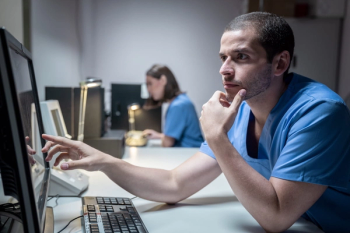
Software, coil advances promise to broaden MR mammography
MR mammography benefits from the reputation of its cornerstone modality's ability to detect soft-tissue abnormalities, particularly cancer. And it presents the opportunity for patients to avoid the discomfort of breast compression.
MR mammography benefits from the reputation of its cornerstone modality's ability to detect soft-tissue abnormalities, particularly cancer. And it presents the opportunity for patients to avoid the discomfort of breast compression.
But MR mammography also faces challenges. Suspicious lesions that are defined on a breast MR image may require biopsy with guidance. MR breast coils capable of biopsy may not be optimally designed for it, and 1.5T cylindrical systems, which are most commonly used for MR mammography, pose access problems.
To help meet these challenges, Toshiba is extending the clinical reach of its general-purpose 0.35T Ultra MR scanner with software and peripherals that optimize the system for breast MR.
Midfield opens are typically not powerful enough to obtain high-quality images of the breast. But that's not the case for the Ultra, which features gradients that operate at an amplitude of 25 mT/m and slew rate of 100 mT/m/sec, said Dr. John Feller, medical director of Desert Medical Imaging of Palm Springs, CA.
"This is the first time we've had a low-field open MRI that has enough gradient performance to do this type of exam," he said.
Feller is working with Toshiba engineers to develop pulse sequences on the Ultra for contrast-enhanced dynamic MR mammography. He directs activities at three Desert Medical Imaging centers in the Coachella Valley. Patients referred for evaluation of a suspicious lesion seen with x-ray mammography are sent to the center housing a 1.5T MR system. Dynamic imaging, which uses gadolinium-based contrast to highlight suspicious breast lesions, requires high temporal as well as spatial resolution. Feller would prefer to use an open system for those exams, as the increased comfort reduces the risk of patient movement.
"We frequently will subtract the post- from the pregadolinium images," he said. "Subtraction works better if the patient is not moving around."
The pulse sequences being developed by Feller and Toshiba engineers will optimize the visualization of contrast using a software package called CADstream. Toshiba is also developing its own custom-made breast coil for use on the Ultra. It is not locked into using just this coil design, however. Another coil that has caught the company's eye is being developed by Confirma of Kirkland, WA, the maker of CADstream.
The coil, which supports breast biopsy with unprecedented flexibility, is now in clinical testing. The multichannel, phased-array coil allows lateral, medial, and cranio-caudal interventions.
"Being able to reach any posterior, lateral lesion is important," said Sara Larsen, Confirma product manager.
Confirma expects to begin marketing its new coil by early spring. Toshiba's optimized breast package could be available as early as midsummer.
Newsletter
Stay at the forefront of radiology with the Diagnostic Imaging newsletter, delivering the latest news, clinical insights, and imaging advancements for today’s radiologists.




























